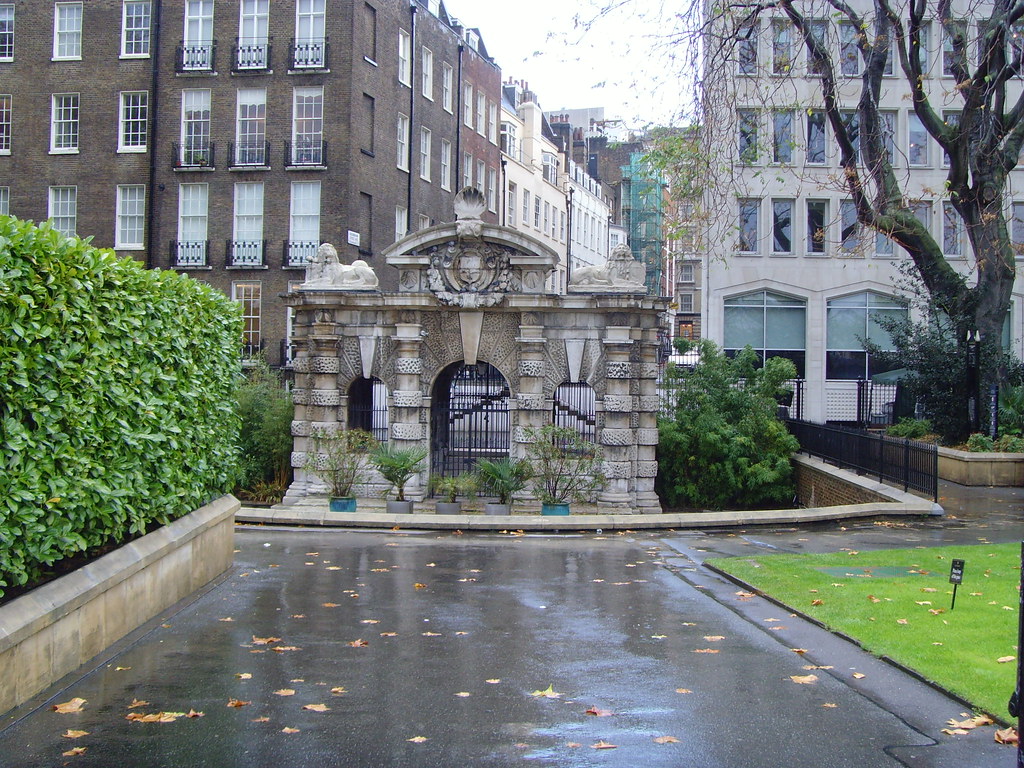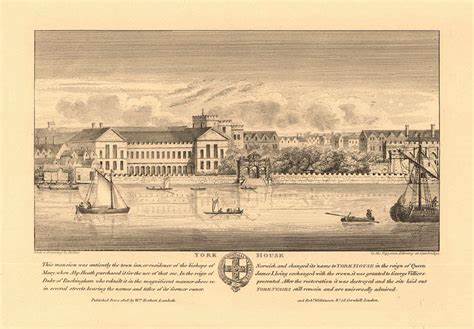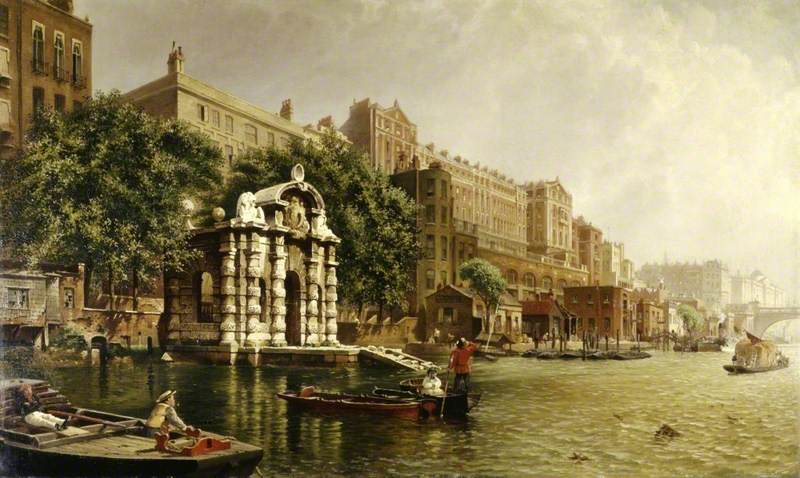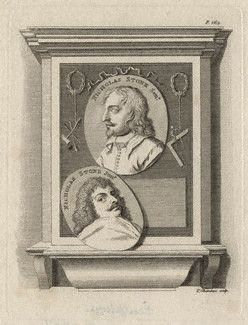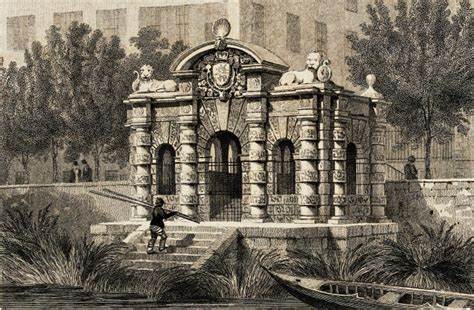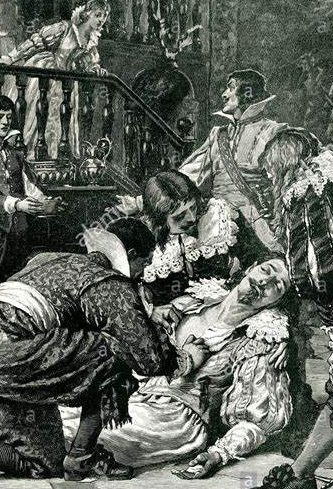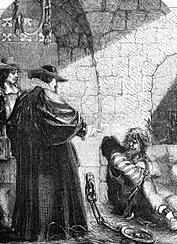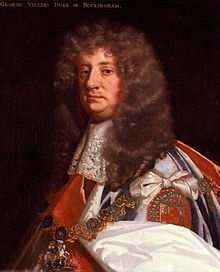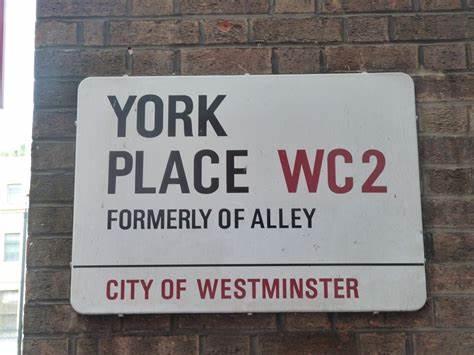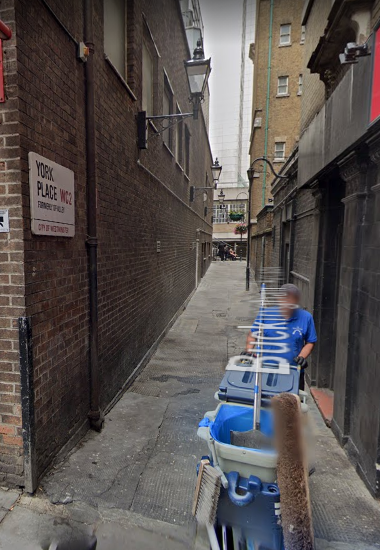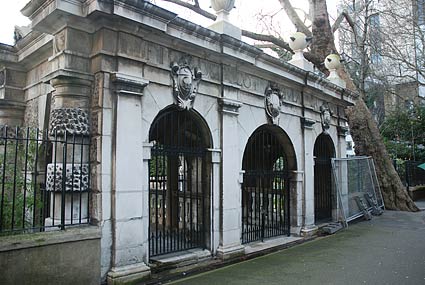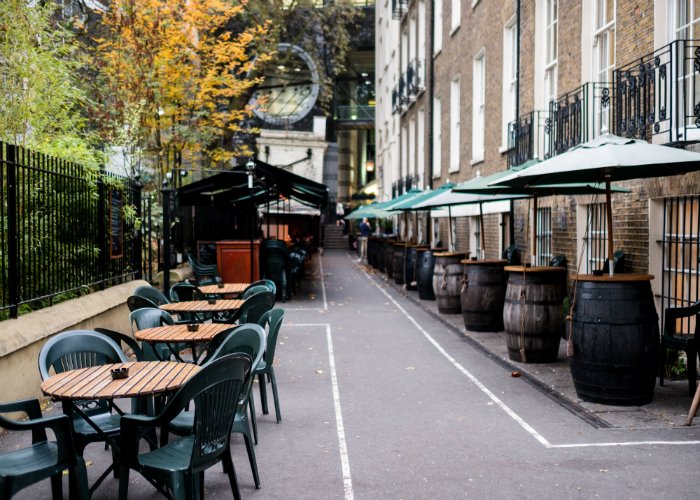One of London's least known but most telling seventeenth century monuments is York Water Gate now rather sadly stranded below lawn-level in Thames Embankment Gardens. What is it doing there?
In fact it is one of the last remaining clues not just to the original line of the (once much wider) Thames but also to the Palaces that ran down from the Strand to the River.
York House was built 1st for the Bishop of Norwich before being transferred to the Archbishop of York.
York House was built 1st for the Bishop of Norwich before being transferred to the Archbishop of York.
In 1622 James I granted it to his latest favourite George Villiers 1st Duke of Buckingham.
James's nickname for Villiers was "Steenie" after St. Stephen who apparently had "the face of an angel"
James's nickname for Villiers was "Steenie" after St. Stephen who apparently had "the face of an angel"
It was Villiers, no sloth when it came to spending money, who added the York Watergate as a suitably princely entrance for his guests and watermen
The architect was probably the sculptor and architect Nicholas Stone who started his career as a mason working for Inigo Jones on the Banqueting House
The Watergate has Villiers's coat of arms but also anchors to signify that he was Lord High Admiral of England
It is modelled on the Medici Fountain in the Jardin du Luxembourg in Paris.
It is modelled on the Medici Fountain in the Jardin du Luxembourg in Paris.
Meanwhile what about Villiers?
Despite protracted incompetence he kept being offered military commands. He was stabbed to death, on 23 August 1628, at the Greyhound Pub in Portsmouth, where he had gone to organise yet another campaign.
Despite protracted incompetence he kept being offered military commands. He was stabbed to death, on 23 August 1628, at the Greyhound Pub in Portsmouth, where he had gone to organise yet another campaign.
The assassin was John Felton, a wounded army officer, who believed he had been passed over for promotion by Villiers. Such was the Duke's unpopularity that Felton was acclaimed as a hero. Celebratory poems were written and his executed body was venerated by the public
George Villers' son (also George) inherited York House. The classic rake, he was just as good as his father at spending money though rather less skilled at getting it given to him. Dryden wrote 'In squandering wealth was his peculiar art'
In 1672 he sold York House to developers
In 1672 he sold York House to developers
He imposed a proviso on the developer (Nicholas Barbon) that ever part of his name should be remembered in the ensuing streets. We therefore still have ......
... George Street, Villiers Street, Duke Street, Buckingham Street and York Place. Best of all used to be Of Alley (Duke OF Buckingham...). Sadly during the C20th this was subsumed by York Place though the history is still recorded on the street sign just near Charing Cross
.... York Water Gate sailed on into the 18th and 19th centuries until in the 1860s the Thames was embanked to create space for a tube train, some proper sewers and a new street. The Water Gate was ...
... left stranded. Initially it was pitied by Victorian journalists ("a dark portal which now leads from nowhere to nothing"), sometimes criticised (one compared it to "the legs of a half-shaved poodle".)
Now, worse, it is rather forgotten. Here's the landward side.
Now, worse, it is rather forgotten. Here's the landward side.

 Read on Twitter
Read on Twitter